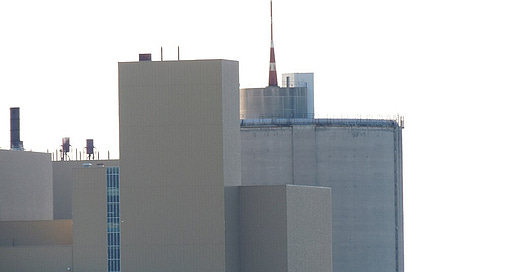How Is Canada Disposing Nuclear Waste?
The Nuclear Waste Management Organization (NWMO) has selected Ignace, Ontario, as the site for Canada’s underground nuclear waste repository after 14 years of evaluating 22 locations.
Context
The Nuclear Waste Management Organization (NWMO) has selected Ignace, Ontario, as the site for Canada’s underground nuclear waste repository after 14 years of evaluating 22 locations.
While nuclear power provides reliable, low-carbon energy, its radioactive waste requires secure storage. Indigenous leaders, including Chief Clayton Wetelainen of the Wabigoon Lake Ojibway Nation, have stressed the need for environmental stewardship, community involvement in the project, and experts highlighting nuclear energy’s safety and affordability.
Analysis
The non-profit organization NWMO is funded by nuclear power and waste corporations, including the Ontario Power Generation, New Brunswick Power Corporation, and Hydro-Quebec.
This deal was made after 14 years of working with Ignace’s town council and the Wabigoon Lake Ojibway Nation. The $26 billion long-term project will take 10 years to construct and is set to begin operations in 2040.
Nuclear power is considered a cleaner energy source as it does not produce carbon emissions like oil, coal, and natural gas. It also requires less land and can produce reliable energy 24/7.
The power source works by using uranium as a fuel to convert heavy water into high-pressure steam, which turns turbines and thus creates energy.
Though not carbon intensive, nuclear power generates radioactive waste, which can remain radioactive for 400,000 years. This waste requires disposal and is often placed in rock that won’t shift or be disturbed.
A significant portion of Eastern Canada’s energy mix comprises nuclear power. In Ontario and New Brunswick, 50 percent and 40 percent of their power is nuclear – the only provinces operating nuclear power plants.
Nuclear power comprises 13.9 percent of Canada’s total energy sources, whereas 67.2 percent comes from renewables and 17.4 percent from fossil fuels.
Canada is also unique in that the Athabasca Region is the world's second-largest producer of uranium. It includes exceptionally high-grade uranium, making energy production localized.
Chief Clayton Wetelainen of Wabigoon Lake Ojibway Nation highlighted how their community’s role in nuclear fuel “is one of the most important responsibilities of our time”.
They maintain that the First Nations will ensure that land and water are central to decision-making as the project progresses.
The NWMO has conducted the “largest and most strenuous impact assessment in Canadian history” to ensure minimal human and environmental harm. However, the risk of nuclear power is “not zero”, according to Markus Piro, Professor of Nuclear Engineering at McMaster University.
Canada has strict guidelines regarding the use of nuclear energy, and despite mixed public perceptions, nuclear power produces “very safe, very reliable and affordable electricity worldwide,” according to Piro.




